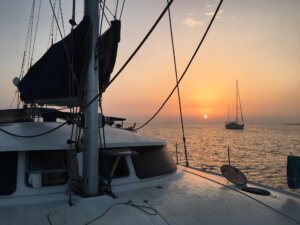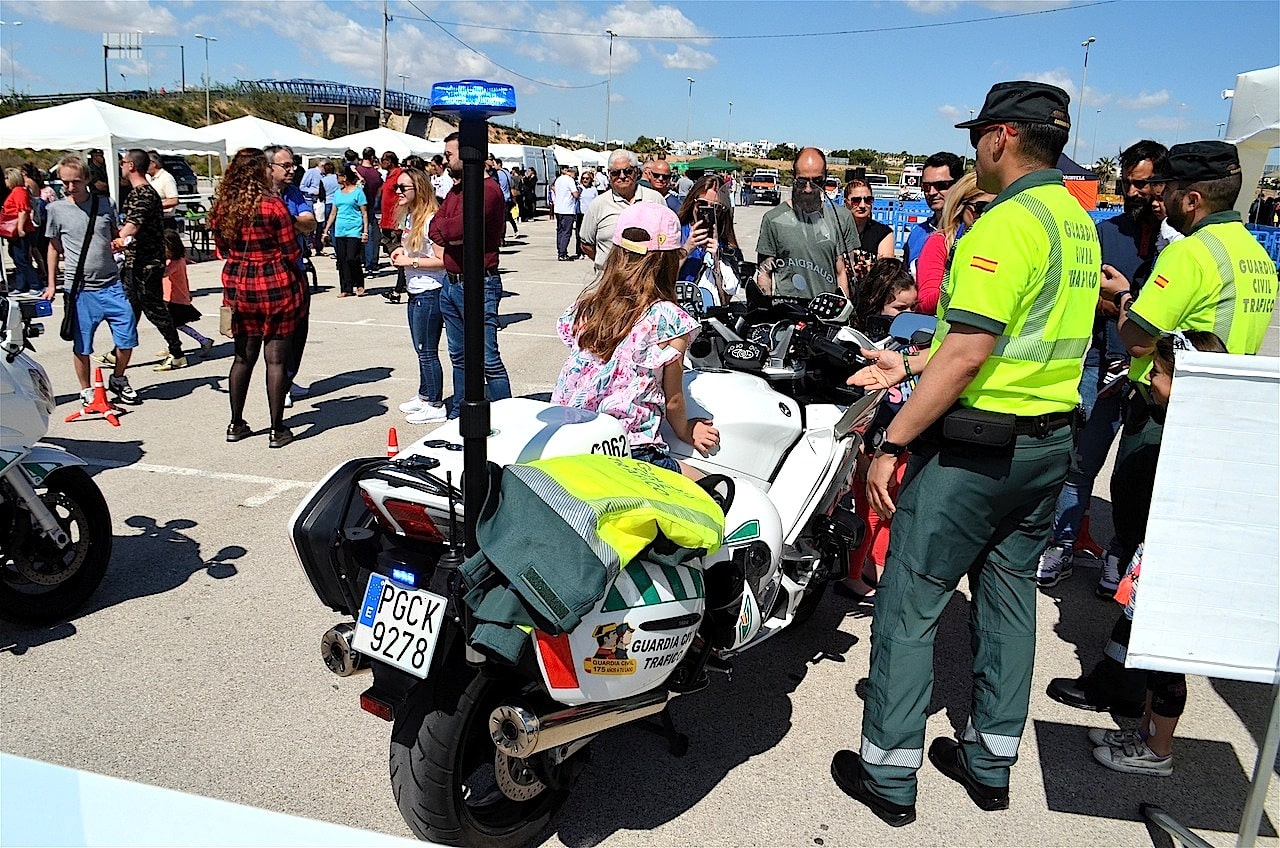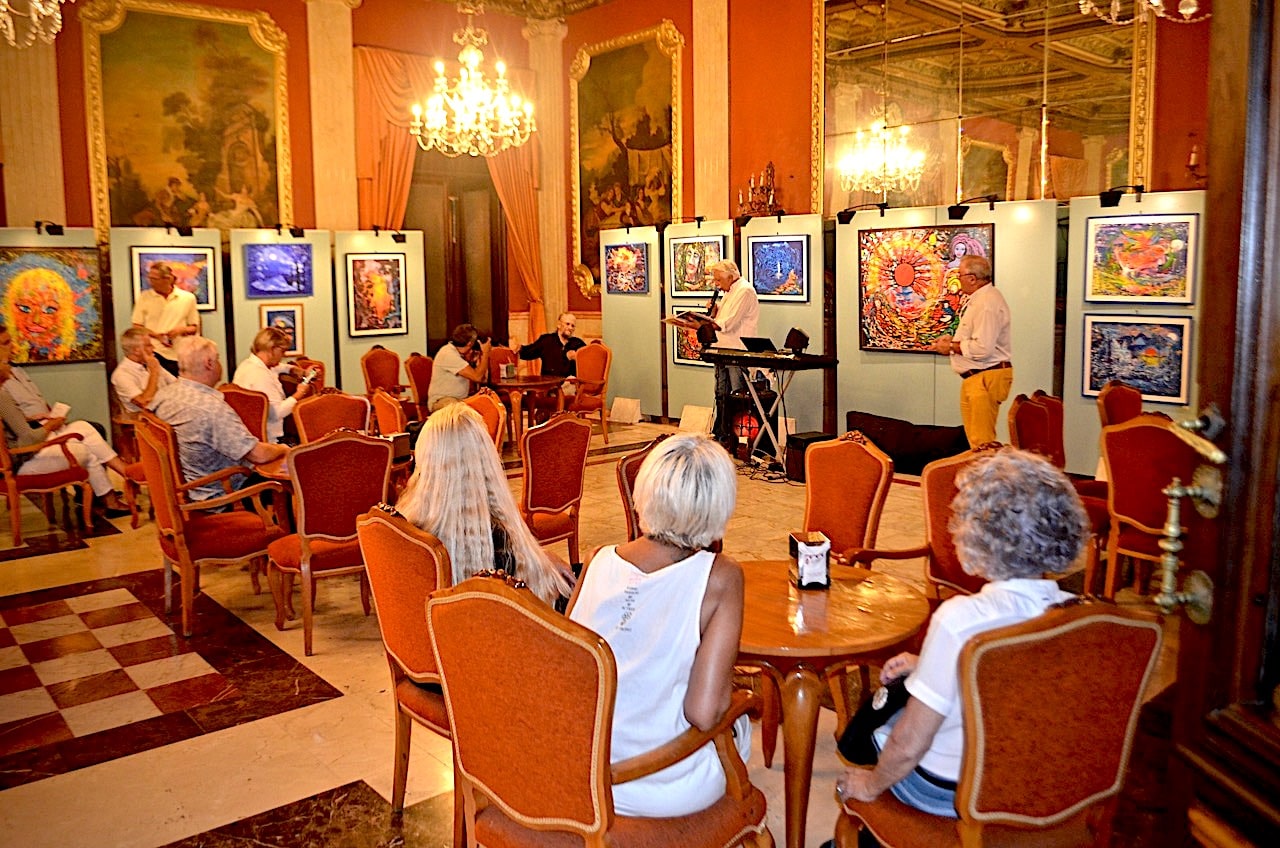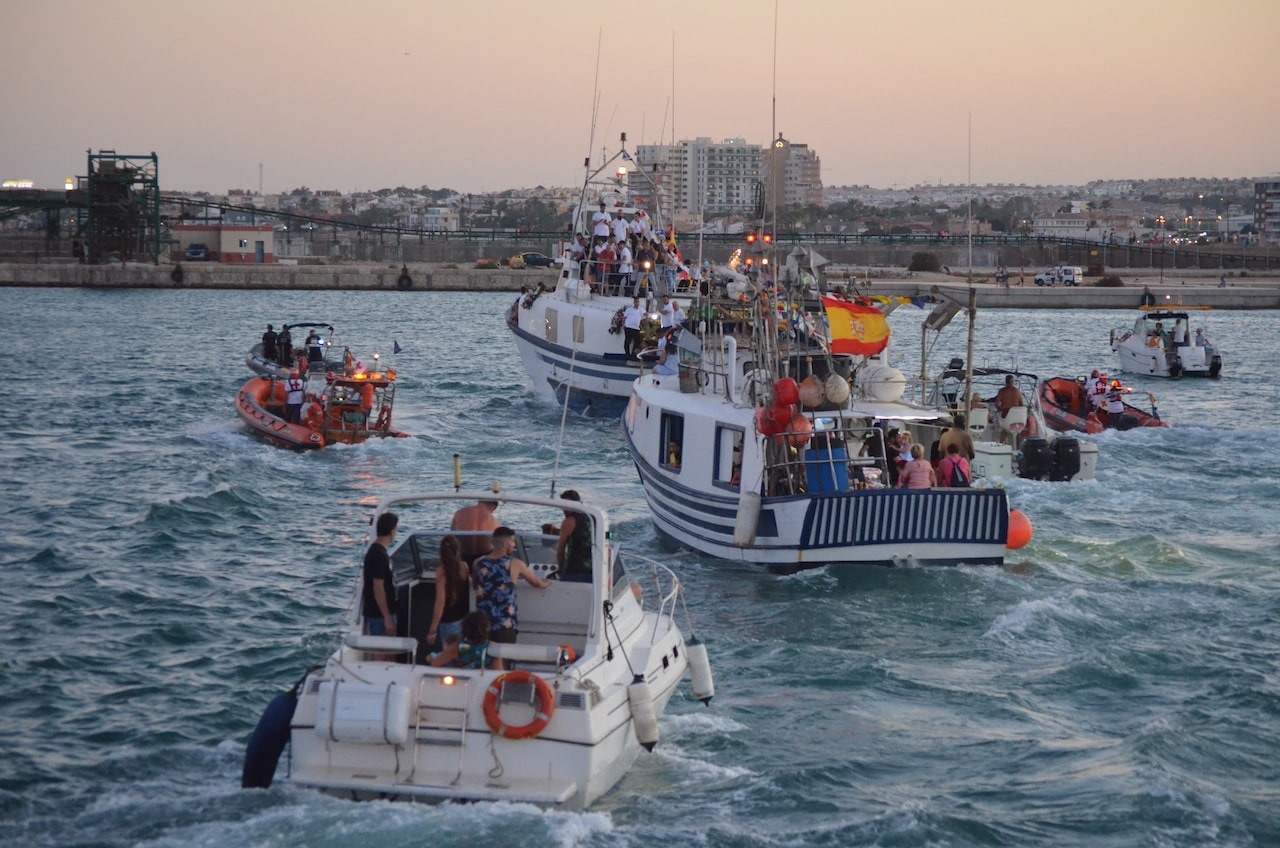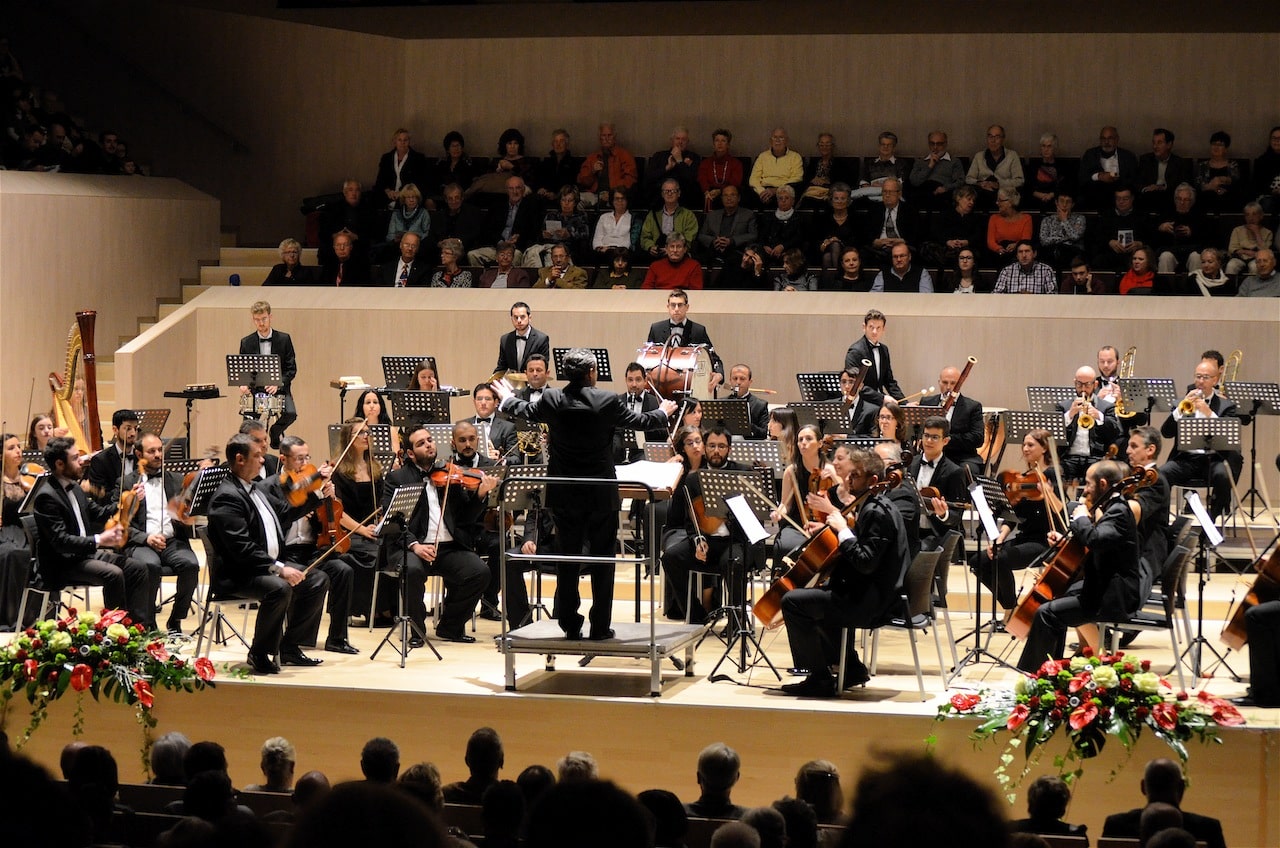Szenetreffpunkt für Kunst und Kultur: Jeden 1. Sonntag im Monat finden Konzerte statt und der Kunsthandwerksmarkt + + + Scene meeting place for art and culture: Cave district “Cuevas del Rodeo”
(scroll down for English)
Es war einst die Heimstätte armer Tagelöhner. Bergarbeiter aus Lorca gruben vor einer Generation Dutzende von Höhlenwohnungen in den Sandsteinhügel oberhalb von Rojales, damals, als die Erzminen bei La Unión stillgelegt worden sind und viele Minenarbeiter in ihrer Suche nach neuer Arbeit als Erntehelfer auf den fruchtbaren Feldern der Vega Baja fündig wurden.

Heute offenbaren sich die Höhlen als Kulturtreff mit maximalem Kultfaktor – die „Cuevas del Rodeo“, das Höhlenviertel von Rojales. Vor 25 Jahren übernahmen Künstler und Kunsthandwerker die über ein Dutzend Höhlen in Pacht von der Gemeinde und richteten sich dort ihre Ateliers ein.
Kulturtreff mit Kultfaktor
Die „cueveros“, die modernen Höhlenbewohner, legten Gärten auf dem Hügel an, pflasterten die Wege und kalkten die Wände ihrer „Casas Cueva“ strahlend weiss. Heute ist das Höhlenviertel von Rojales schöner denn je. Und die Cuevas del Rodeo haben sich als besondere Tourismusattraktion an der südlichen Costa Blanca etabliert.

Herz und Seele der Cuevas, das ist Carlos Carmona. Der bärtige Künstler und Bildhauer mit seinem stets vergnüglichen Lächeln in den Augen stammt ursprünglich aus dem andalusischen Cádiz. Als Wirt schenkt er Bier und Wein in der Höhlenbar Nummer 10 “B-Art” aus, wenn er nicht gerade an einer seiner überdimensionalen Skulpturen schweißt, hämmert und feilt. Carlos Carmona organisiert auch die sommerlichen Live-Konzerte bis Mitternacht.

Die Crew der Cuevas – ob Carlos Carmona, Abraham Martí, Carmen Sánchez, Jennifer Rotter und Hilarión Pedauyé, Santi Veracruz, José Ángel Paredes, Inma Noguera und Antonio Villa – haben mit den Cuevas del Rodeo einen Szene-Treffpunkt für Kunst und Kultur an der Costa Blanca geschaffen, der im Land Valencia seinesgleichen sucht. Das idyllische aufgehübschte Höhlenviertel erinnert mit seinem besonderen Ambiente an Granada in Andalusien, die Höhlenviertel der Kanaren und irgendwie auch an den Flair von Ibiza.

Da finden Workshops in Leder, Keramik oder Papier statt. Bei Art´n Ground gibt es selbstgebrautes Bier, internationale Künstler können sich hier tage oder wochenweise kreativ im Rahmen einer „Artist Residence“ einbuchen. Die Cueva Sala Mengolero, die große Ausstellungshöhle inmitten des Gevierts, beherbergt ständig wechselnde Kunstausstellungen, unterstützt vom Kulturamt der Gemeinde.
Die Hippies von den Höhlen haben sich in den letzten Jahren zunehmend dem Publikum geöffnet. Internationale Residenten aus Deutschland und England, Skandinavien, Holland oder Belgien lieben das besondere Ambiente in den Höhlen. Vor allem im Sommer. Freitag abends zum Beispiel, bei stimmungsvollen Live-Konzerten mit Jazz, Flamenco, Rock oder Klassik.

Ein Highlight des Jahres bildet das Festival „Rodearte“. Drei Tage lang jeweils Anfang Mai wird auf wechselnden Bühnen in dem Höhlenviertel gefeiert, mit Musik, Tanz und Konzerten. Dann schaut auch Bürgermeister Antonio Pèrez mal wieder vorbei und freut sich über das multikulturelle Treiben in seinem Dorf.
Es sind die verschiedensten Musiker, die in den Cuevas del Rodeo ihre Bühne und ihr Publikum finden. Peter Graute zum Beispiel, geboren in Rotterdam. Schwarz ist seine Modefarbe, der Hut auf dem Kopf ein Must. Der Niederländer spielte sein Leben lang E-Gitarre und hat schon Sting auf der Bühne gesehen, als “The Police” noch völlig unbekannt war. „Improvisation ist die Kunst, ganz in der Musik aufzugehen.“ In den Höhlen von Rojales absolvierte Graute letzten Sommer einen ersten Konzert-Zyklus mit seiner Band „The Gathering“. Mit dabei: Steve Keen, der Schlagzeuger aus London.
Live-Konzerte und Kunst
Mit ihren Instrumenten, darunter Steve an der digitalen Roland-Percussion, zaubern die Musiker Klangteppiche in den Raum, die das Publikum faszinieren und auf unvergleichliche Art in Trance versetzen. Mitunter kommen Gast-Musiker in die Höhlen, oft dabei der renommierte Harmonika-Spieler Juan Blas Becerra, der sonst mit „Seguridad Social“ und Mark Olson auf der Bühne steht. Oder der Saxophonist Rafael Orts Espadero aus Alicante. Und natürlich der Pianist Luis Suria mit seiner Band.

Die Künstlerin Gloria Lapeña Gallego hat sich jüngst auf die Spuren des Dichters Ibn al Arabi gemacht. Der große Dichter der sufistischen Mystik wurde 1164 in Murcia geboren und starb in Damaskus im Jahr 1240. Gloria Gallego stellte ihre Arbeiten beim letzten „Rodearte“ aus. Die Künstlerin präsentiert ihre Graphiken auch im Rahmen der internationalen Universitätsausstellung von Bilbao sowie in der „Cité Internationale Universitaire“ von Paris.
Unter dem Titel „Tatha al-zará“ (Zuflucht des Dichters) thematisieren ihre Bilder das Spannungsfeld von Natur, Zivilisation und Kultur der Huerta der Vega Baja. Bei Recherchen zum Lebenslauf des arabischen Mystikers entdeckte sie die vielen Spuren maurischer Kultur, die an der spanischen Levanteküste zerstört worden, aber in Städten wie Córdoba gut erhalten sind. „Ich dachte immer, wir hätten hier kaum maurisches Erbe“, so Gallego im Interview des Online-Magazins „Amanece Metrópolis“ (www.amanecemetropolis.net). Dann sei ihr bewusst geworden, dass der vermeintliche Mangel ein Resultat moderner Siedlungspolitik gewesen sei. „Viele archäologische Reste wurden wegen der Bodenspekulation zerstört.“
Panorama-Blick über die Vega Baja
Sie ist ein ursprüngliches spanisches Idyll, die Landschaft zu beiden Ufern des Flusses Segura. Immergrüne Orangen- und Zitronenhaine wechseln sich ab mit Feldern, auf denen Artischocken, Kartoffeln, Salat, Tomaten, Zwiebeln, Baumwolle und Granatäpfel gedeihen. Inmitten der fruchtbaren Huerta, kultiviert schon von den Mauren, liegen Dörfer eingebettet, die in der Ebene durch ihre weiß gekalkten Kirchtürme mit den typisch kobaltblau glasierten Dachschindeln auffallen.
Der Fluss Segura hat über die Jahrtausende Sand und Sedimente ins Meer gespült. So hat sich zwischen Alicante, Elche und Orihuela ein fruchtbares Schwemmland gebildet, das bekannt ist als die „Vega Baja del Segura“, zu deutsch: Der untere Flusslauf des Segura. Genau 27 Gemeinden bilden die Vega Baja, eine Region von der halben Größe Berlins, erstmals besiedelt von den Iberern.
Von der Terrasse der Bar „B-Art“ in den Cuevas del Rodeo genießt der Besucher den besten Blick über das weite Land. Im Süden zeichnen sich die scharf gezackten Silhouetten der Sierra de Callosa und Sierra de Orihuela am Horizont ab. Im Westen lässt sich das schimmernde Blau des Mittelmeers erahnen. Dazwischen sprenkeln weiße Bauerndörfer die Scholle – Albatera zum Beispiel, Algorfa, Almoradí, Benejúzar, Benijófar, Bigastro, Catral, Cox, Dolores, Jacarilla, Formentera del Segura, Los Montesinos, San Miguel de Salinas, Rojales und Redován.
Auf den Spuren einer verlorenen Zeit
Bei der Fahrt von Torrevieja nach Rojales, entlang der Acequías und Azarabes, den maurischen Bewässerungsgräben, und vorbei an vier Meter hohem Schilfrohr, das sich im Uferbereich des Segura im Wind wiegt, entdeckt man die Schönheiten dieser Landschaft. Das alte Wasserrad, die „Noria“ bei Benijófar zum Beispiel, gelegen inmitten der Plantagen von Apfelsinen- und Zitronenbäumen. Es ist eine Schönheit, die sich oft erst auf den zweiten Blick erschießt, beim Halt am Wegesrand. Aber die Zeit rennt einem hier nicht davon. die Vega Baja, das ist eine ländlich gebliebene, ganz bodenständige Region – fernab der Ferienhaussiedlungen an der Küste und doch dem touristischen Trubel nah.
Und wenn die Levante-Brise mittags jeglichen Dunst wegweht, staffeln sich die Äcker, Karsthügel und Bergkämme zu einem strahlenden Panorama, das wie von innen heraus zu glühen scheint. In der Vega Baja ist die Welt rein blau und weiß und grün.
ENGLISH
Scene meeting place for art and culture: Cave district “Cuevas del Rodeo” in Rojales
It was once the home of poor day laborers. Miners from Lorca dug dozens of cave dwellings into the sandstone hillside above Rojales a generation ago, back when the ore mines near La Unión had shut down and many miners found new work as harvesters in the fertile fields of Vega Baja.
Today, the caves reveal themselves as a cultural meeting place with maximum cult factor – the “Cuevas del Rodeo”, the cave district of Rojales. Twenty-five years ago, artists and craftsmen leased the more than a dozen caves from the municipality and set up their studios there.
Cultural meeting place with cult factor
The “cueveros”, the modern cave dwellers, laid out gardens on the hill, paved the paths and whitewashed the walls of their “Casas Cueva” bright white. Today, the cave district of Rojales is more beautiful than ever. And the Cuevas del Rodeo have established themselves as a special tourist attraction on the southern Costa Blanca.
The heart and soul of the Cuevas is Carlos Carmona. The bearded artist and sculptor with his always amusing smile in his eyes originally comes from the Andalusian Cádiz. As a host, he serves beer and wine in the cave bar number 10 “B-Art” when he is not welding, hammering and filing one of his oversized sculptures. Carlos Carmona also organizes the summer live concerts until midnight.
The crew of the Cuevas – whether Carlos Carmona, Abraham Martí, Carmen Sánchez, Jennifer Rotter and Hilarión Pedauyé, Santi Veracruz, José Ángel Paredes, Inma Noguera and Antonio Villa – have created with the Cuevas del Rodeo a scene meeting point for art and culture on the Costa Blanca, which is unparalleled in the Valencia region. With its special ambience, the idyllic, spruced-up cave district is reminiscent of Granada in Andalusia, the cave districts of the Canary Islands and somehow also of the flair of Ibiza.
Workshops in leather, ceramics or paper take place there. Art’n Ground serves home-brewed beer, and international artists can book creative residencies here for days or weeks at a time. Cueva Sala Mengolero, the large exhibition cave in the middle of the neighborhood, hosts constantly changing art exhibitions, supported by the municipality’s cultural office.
The hippies of the caves have increasingly opened to the public in recent years. International residents from Germany and England, Scandinavia, Holland or Belgium love the special ambience in the caves. Especially in summer. Friday evenings, for example, at atmospheric live concerts with jazz, flamenco, rock or classical music.
A highlight of the year is the “Rodearte” festival. For three days at the beginning of May, music, dance and concerts are held on different stages in the cave district. Mayor Antonio Pèrez also drops by once in a while and is pleased about the multicultural hustle and bustle in his village.
A wide variety of musicians find their stage and their audience in the Cuevas del Rodeo. Peter Graute, for example, was born in Rotterdam. Black is his fashion color, the hat on his head a must. The Dutchman played electric guitar all his life and has seen Sting on stage when “The Police” was still completely unknown. “Improvisation is the art of being completely absorbed in the music.” Graute completed a first cycle of concerts with his band, “The Gathering,” in the Rojales caves last summer. Joining him was Steve Keen, the drummer from London.
Live concerts and art
With their instruments, including Steve on the digital Roland percussion, the musicians conjure up tapestries of sound in the room that fascinate the audience and put them in an incomparable trance. Sometimes guest musicians come into the caves, often including the renowned harmonica player Juan Blas Becerra, who is otherwise on stage with “Seguridad Social” and Mark Olson. Or the saxophonist Rafael Orts Espadero from Alicante. And of course the pianist Luis Suria with his band.
The artist Gloria Lapeña Gallego has recently set out in the footsteps of the poet Ibn al Arabi. The great poet of Sufi mysticism was born in Murcia in 1164 and died in Damascus in 1240. Gloria Gallego exhibited her work at the last “Rodearte”. The artist also presents her graphics in the International University Exhibition of Bilbao and in the “Cité Internationale Universitaire” of Paris.
Under the title “Tatha al-zará” (Refuge of the Poet), her paintings focus on the tension between nature, civilization and culture of the Huerta of Vega Baja. While researching the life of the Arab mystic, she discovered the many traces of Moorish culture that have been destroyed on Spain’s Levant coast but are well preserved in cities like Córdoba. “I always thought we had hardly any Moorish heritage here,” Gallego said in an interview with the online magazine “Amanece Metrópolis” (www.amanecemetropolis.net). Then, she said, she realized that the supposed lack was a result of modern settlement policies. “Many archaeological remains were destroyed because of land speculation.”
Panoramic view of Vega Baja
It is an original Spanish idyll, the landscape on both banks of the Segura River. Evergreen orange and lemon groves alternate with fields where artichokes, potatoes, lettuce, tomatoes, onions, cotton and pomegranates thrive. In the middle of the fertile Huerta, already cultivated by the Moors, villages are nestled, which stand out in the plain by their whitewashed church towers with the typical cobalt blue glazed roof shingles.
Over the millennia, the Segura River has washed sand and sediments into the sea. Thus, between Alicante, Elche and Orihuela, a fertile alluvial plain has formed, known as the “Vega Baja del Segura”. Exactly 27 municipalities make up the Vega Baja, a region half the size of Berlin, first settled by the Iberians.
From the terrace of the bar “B-Art” in the Cuevas del Rodeo the visitor enjoys the best view over the wide country. To the south, the sharply jagged silhouettes of the Sierra de Callosa and Sierra de Orihuela stand out on the horizon. To the west, the shimmering blue of the Mediterranean Sea can be glimpsed. In between, white farming villages dot the floe – Albatera, for example, Algorfa, Almoradí, Benejúzar, Benijófar, Bigastro, Catral, Cox, Dolores, Jacarilla, Formentera del Segura, Los Montesinos, San Miguel de Salinas, Rojales and Redován.
In the footsteps of a lost time
Driving from Torrevieja to Rojales, along the Acequías and Azarabes, the Moorish irrigation ditches, and passing four-meter high reeds swaying in the wind on the banks of the Segura, one discovers the beauties of this landscape. The old water wheel, the “Noria” at Benijófar for example, situated in the middle of the plantations of orange and lemon trees. It is a beauty that is often only revealed at second glance, when stopping along the way. But time doesn’t run away here. Vega Baja is a rural, down-to-earth region – far away from the vacation home developments on the coast and yet close to the tourist hustle and bustle.
And when the Levante breeze blows away any haze at midday, the fields, karst hills and mountain ridges stagger into a radiant panorama that seems to glow from within. In Vega Baja, the world is pure blue and white and green.






